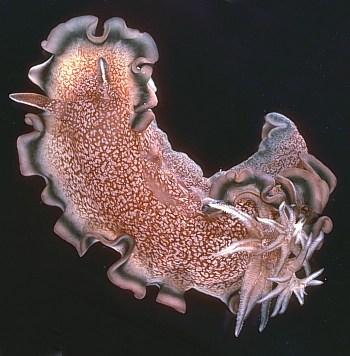
Glossodoris hikuerensis
(Pruvot-Fol, 1954)
Order: NUDIBRANCHIA
Suborder: DORIDINA
Superfamily: EUDORIDOIDEA
Family: Chromodorididae
DISTRIBUTION
Indo-West Pacific
PHOTO
Heron Is., Great Barrier Reef, Queensland. December 1981. 80mm long alive. PHOTO: Bill Rudman.
Originally described from the Tuamotu Archipelago, central Pacific, it has a wide distribution from East Africa to Fiji and Queensland. This species is similar in colour and shape to Glossodoris cincta, but the three bands at the mantle border are wider and different colours. In G. hikuerensis there is an outer pale brown band, then a whitish band and an inner dark almost black band.
Reference:
• Rudman, W.B. (1986) The Chromodorididae (Opisthobranchia: Mollusca) of the Indo-West Pacific: the genus Glossodoris Ehrenbergh (= Casella, H.& A. Adams). Zoological Journal of the Linnean Society, 86: 101-184.
Rudman, W.B., 2000 (April 30) Glossodoris hikuerensis (Pruvot-Fol, 1954). [In] Sea Slug Forum. Australian Museum, Sydney. Available from http://www.seaslugforum.net/find/gloshiku
Related messages
Mantle secretions - Glossodoris hikuerensis
December 23, 2009
From: Teresa (Zubi) Zuberbühler

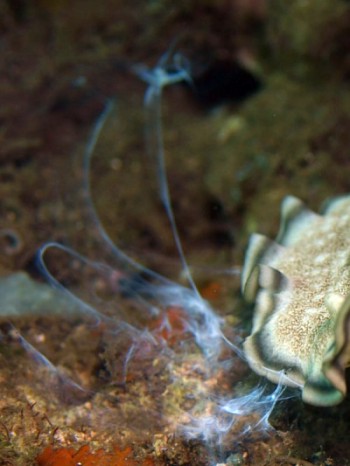
Concerning message #22554:
I include 3 photos of the milky white substance Glossodoris hikuerensis is secreting when being threatened.
It nearly looks like white ink. Is there any relation to the inking behavior showed by the more advanced molluscan relatives like squids or octopus?
Locality: Maumere, 10-15m, Flores, Indonesia, Indopacific, 12. July 2009, sand with coral blocks. Length: 4-5cm. Photographer: Teresa (Zubi) Zuberbühler.
Teresa (Zubi) Zuberbühler
webmaster@starfish.ch
Zuberbühler, T., 2009 (Dec 23) Mantle secretions - Glossodoris hikuerensis. [Message in] Sea Slug Forum. Australian Museum, Sydney. Available from http://www.seaslugforum.net/find/23014
Dear Teresa,
Thanks for these photos showing the mantle glands in action. As I mentioned in the message you referred to, the milky-white substance it exudes when disturbed is almost certainly a deterrent secretion manufactured from chemicals it ingests from its food sponge.
Quite a few dorids harbour such chemicals from their food sponges, but it seems that in the chromodorids we see the greatest elaboration of glands or storage sacs to contain these defensive metabolites. It also seems that different genera of chromodorids have chosen different sponges families as their preferred food and so they have evolved different mantle glands to accommodate the different types of chemicals their food sponges manufacture. That is one of the reasons I have been tryng to accumulate more information on the sponges each species of chromodorid feeds on. have a look at the followng Fact Sheets for more information:
Another quite different 'inking' is found in the Sea Hares [see Ink Glands]. Although this has been likened to the Purple Ink of the Octopus, I suspect it is a waste product from feeding on red algae.
The purple ink of cephalopods [octopus, squid] which you mention is quite different. It is manufactured by the animal and from all observations appears to be a defensive 'smoke screen' to confuse predators and give the suid ot octopus a chance to escape.
In chromodorids the secretions - if not poisonous, are certainly so distasteful that potential predators spit out or avoid eating animals that produce them.
Best wishes,
Bill Rudman
Re: Glossodoris hikuerensis from sthn Queensland
August 20, 2009
From: Scott Johnson
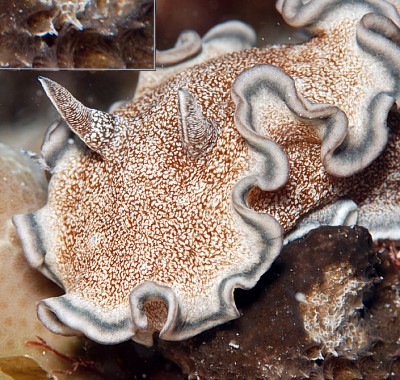
Concerning message #22554:
Hi Bill,
Glad to see the new messages back in operation. Hope you can get the technical issues fixed soon. I wanted to respond to Gary's message on Glossodoris hikuerensis with these photos of specimens feeding on what certainly appear to be thorectid sponges. All were photographed on the seaward reef at Kwajalein Atoll. The upper three photos were taken by Jeanette Johnson on 28 July 2008; the closeup [lower photo] was shot some time earlier, although I don't have the date readily available. All show grazing damage to the sponge, and the animal was feeding on those spots when found.
Locality: Kwajalein Atoll, 10-15 m, Marshall Islands, Pacific, 28 July 2008, Under rock on hard reef slope. Length: 40-50 mm. Photographer: Jeanette and Scott Johnson.
Scott
http://www.underwaterkwaj.com
uwkwaj@yahoo.com



Dear Scott,
Thanks for making my day! This certainly helps confirm that this species feeds on thorectid sponges
Best wishes,
Bill Rudman
Glossodoris hikuerensis from sthn Queensland
August 17, 2009
From: Gary Cobb

Concerning message #22122:
Hi Bill and everyone!
Here is a record of Glossodoris hikuerensis from our area. We have found this species up to 110 mm in length. It gives off a milky white substance at the slightest bit of disturbance. I have included a photo of it eating, maybe you can tell what the food source is.
Locality: Mooloolaba, Sunshine Coast, 17 m, Queensland, Australia, Pacific Ocean, 15 June 2009, Subtidal. Length: 110 mm. Photographer: Gary Cobb and David Mullins.
Cheers
Gary Cobb
gary@nudibranch.com.au
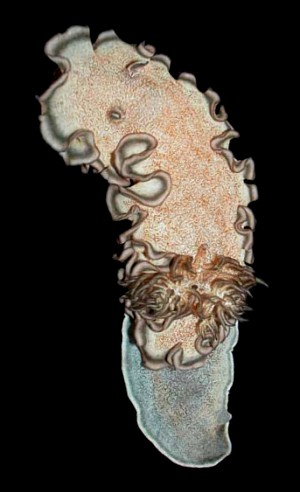


Dear Gary,
Thanks for the record - and the tantalising photos of it apparently feeding. Unfortunately the sponge is too well hidden to give us even a hint at its identity. We don't know much about the sponge or sponges it feeds on. The only clues suggest it is a thorectid. The milky-white substance it exudes when disturbed is almost certainly a deterrent secretion manufactured from chemicals it ingests from its food sponge.
Best wishes,
Bill Rudman
Re: Glossodoris hikuerensis with egg ribbon
January 15, 2009
From: Hugues Flodrops

Concerning message #21642:
Dear Bill and Lawrence,
I have one picture of Glossodoris hikuerensis in association with a similar egg ribbon to that seen by Lawrence.
Locality: Etang-Salé "les brisants", 1.5 metre, Reunion Island, Indian Ocean, 12 December 2008, Night Strong current. Length: 35-40 mm. Photographer: Hugues Flodrops.
Best regards.
Hugues.
hugues.flodrops@wanadoo.fr
Flodrops, H., 2009 (Jan 15) Re: Glossodoris hikuerensis with egg ribbon. [Message in] Sea Slug Forum. Australian Museum, Sydney. Available from http://www.seaslugforum.net/find/22122Thanks Hugues,
The egg mass in your photo certainly looks like that in Lawrence Neal's photo.
Best wishes,
Bill Rudman
Glossodoris hikuerensis with egg ribbon
June 30, 2008
From: Lawrence Neal
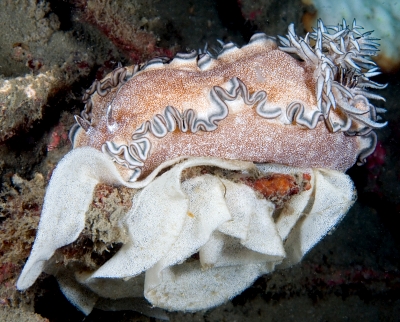
Dear Bill,
Please find a couple of pictures of a pair of Glossodoris hikuerensis in the process of laying eggs during a night dive (I'm not sure if both slugs or only one was laying eggs). Both the Nudibranchs and the egg ribbon were very large and impressive.
Locality: Lembeh Island, 20 metres, North Sulawesi, Indonesia, Lembeh Strait, Celebes Sea, 20 February 2008, White sand, mixed coral. Length: Approx. 100 mm. Photographer: Lawrence Neal.
Thanks and all the best,
Lawrence
lorenzo_n@yahoo.com

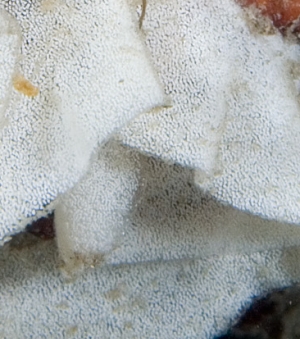
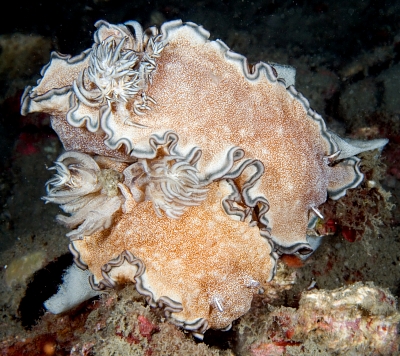
Dear Lawrence,
I haven't seen the egg ribbon of G. hikuerensis so this is an interesting find. At the risk of sounding a tad ungrateful, did you actually see one of them actually laying the egg ribbon? I have looked very carefully at your high resolution photos and as I can't actually see the female opening I can't be 100% sure that egg laying is taking place, There is always a possibility that these two animals were attracted to a food sponge that the eggs were already attached to. Certainly if someone else has photos of G. hikuerensis in close association to similar egg ribbon it would make me a little more confident of its identity.
I must say the photo of the gills is very spectacular. Many of the larger species of Glossodoris have the gills arranged not in a complete circle but in an arc around the anus, and at the ends of the arc smaller gills form a vertical spiral, greatly increasing the number of gills. I have not seen one quite as elaborate as yours.
Best wishes,
Bill Rudman
Glossodoris hikuerensis from Egypt
July 25, 2006
From: Kamal El Tawil
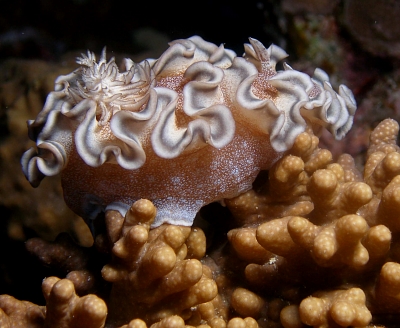

Dear Bill:
Here is a Glossodoris hikuerensis posing on hard coral. It seemed disturbed by either my close presence or by my strobe light (?). It coiled its body inwards then moved away very slowly.
Locality: Maksour Reef, Fury Shoal, Red sea, 4 metres, Egypt, Red Sea, 10 July 2006. Length: 8-10 cms. Photographer: Kamal El Tawil.
Best regards,
Kamal
kamal@coralworld.net
El Tawil, K., 2006 (Jul 25) Glossodoris hikuerensis from Egypt. [Message in] Sea Slug Forum. Australian Museum, Sydney. Available from http://www.seaslugforum.net/find/17210
Dear Kamal,
Thanks for these photos. They show the cork-screw like arrangement of the gills at each end of the gill arch. The gills in many species of Glossodoris form an arch around the anal papilla, rather than a circle, . The two ends of the arch curl inwards to form secondary spirals, which when the animals are big, make more room for the gills by spiralling upwards like this.
Best wishes,
Bill Rudman
Glossodoris hikuerensis from French Polynesia
June 9, 2006
From: Erwin Koehler

Concerning message #16795:
Dear Bill,
Here is a shot of Glossodoris hikuerensis also from French Polynesia, this one looks the way it should look like, not like the one in my earlier message
Locality: Tahiti, unrecorded, French Polynesia, Pacific Ocean, unrecorded. Length: unrecorded. Photographer: Meketa Pihatarioe.
Regards
Erwin
Erwin@Philippine-Sea-Slugs.com
Koehler, E., 2006 (Jun 9) Glossodoris hikuerensis from French Polynesia. [Message in] Sea Slug Forum. Australian Museum, Sydney. Available from http://www.seaslugforum.net/find/16820Dear Erwin,
I can't me 100% sure without dissecting your animal, but from my experience with this group of species I am pretty sure the one in your earlier message, with the narrow dark line, is also a colour form of G. hikuerensis. If you look at the other messages about this species you can see a gradation in colour forms from ones with a broad submarginal colour band on the mantle to animals with a narrow submarginal colour band - the narrower the band the more intense the colour. The actual colour varies from green, as in your photos, to brown.
The similarly coloured G. cincta also has a range of colour. Before I looked at its anatomy I was pretty sure there were two or three species, but I could find no 'measurable' differences and so concluded there were perhaps three geographical colour forms. As more material has come available on the Forum these geographical groupings have become blurred.
Best wishes,
Bill Rudman
Glossodoris hikuerensis from French Polynesia
June 6, 2006
From: Erwin Koehler
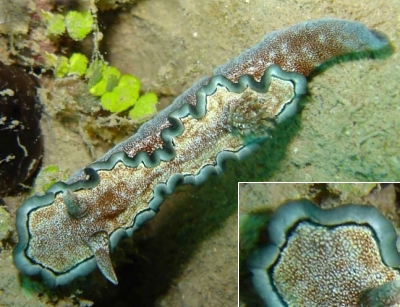
Dear Bill,
Do you know a name for this Glossodoris from French Polynesia? I'm afraid I don't have much locality information
Locality: French Polynesia, Pacific Ocean. Photographer: Meketa Pihatarioe.
Regards,
Erwin
Erwin@Philippine-Sea-Slugs.com
Koehler, E., 2006 (Jun 6) Glossodoris hikuerensis from French Polynesia. [Message in] Sea Slug Forum. Australian Museum, Sydney. Available from http://www.seaslugforum.net/find/16795Dear Erwin,
Although a bit greenish in colour, I am pretty sure this is Glossodoris hikuerensis, which was first reported from Tuamotu Archipelago, in French Polynesia.The colour of the mantle edge with a blackish inner band, then white which merges into the greyish outer zone, is characteristic of this species.
Best wishes,
Bill Rudman
Glossodoris hikuerensis from the Red Sea
January 10, 2006
From: Uwe Jacobs
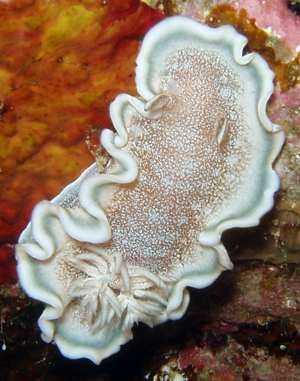
I took a picture of a nudibranch I've been wondering about.
Locality: The Lighthouse Reef, Dahab, Egypt, Red Sea, Gulf of Aqaba. Depth: 10 m. Length: 50 mm. 20 December 2005. Photographer: Uwe Jacobs
The animal was approx. 5 cm long. To me it looks like a Glossodoris pallida. Is it just an unusual colour form of this species?
Thanks for your help,
Uwe
eetsuja@koegekom.dk
Jacobs, U.K.P., 2006 (Jan 10) Glossodoris hikuerensis from the Red Sea. [Message in] Sea Slug Forum. Australian Museum, Sydney. Available from http://www.seaslugforum.net/find/15506Dear Uwe,
This is Glossodoris hikuerensis.
Best wishes,
Bill Rudman
Glossodoris hikuerensis from the Red Sea
October 5, 2005
From: Maarten Klerkx
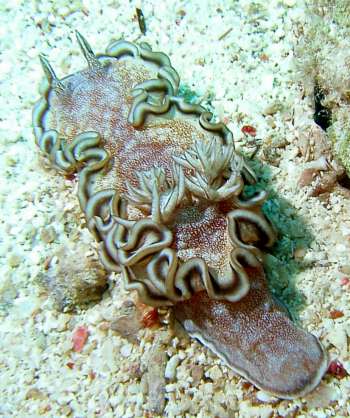
Dear Bill,
In November 2004 i dived at northern Egypt. There i spotted what i believe was a Glossodoris hikuerensis. Can you confirm this please?
Locality: Abu Nuhas, Egypt, Red Sea. Depth: 10 metres. Length: 200 mm. 09 november 2004. Photographer: Ruud van Wort
Thanks,
Maarten
knex11@home.nl
Klerkx M.J.A., 2005 (Oct 5) Glossodoris hikuerensis from the Red Sea. [Message in] Sea Slug Forum. Australian Museum, Sydney. Available from http://www.seaslugforum.net/find/14919Dear Maarten,
Yes this is Glossodoris hikuerensis.
Best wishes,
Bill Rudman
Re: Glossodoris hikuerensis from Reunion
August 10, 2003
From: Yves Coze
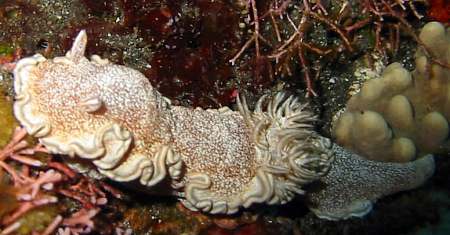

Dear Bill,
I dive in Reunion Island and I'm quite fascinated by sea slugs. In answer to your earlier comment I can confirm that Glossodoris hikuerensis occurs quite often. I've spotted some twice in Etang Salé on the "Petit Tombant" diving site. The photograph I attached comes from there.
Quite recently (last Saturday - July, 2003) I've spotted two of them in Saint Paul "Cap La Houssaye" diving site during a night dive. Most unfortunately I lost my camera during that dive, so the pictures were lost... They were roaming around on a coral reef.
Cheers,
Yves
info@rando-reunion.Com
Dear Yves,
Thanks for the information about this species' abundance in Reunion. These records help us to fill the many gaps in our knowledge. Sorry to hear about your camera
Best wishes,
Bill Rudman
Glossodoris hikuerensis from Burma
March 23, 2003
From: Sarah Heaney
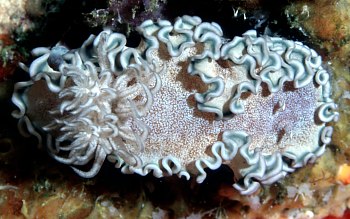
Hi
Is this nudibranch Glossodoris rufomarginata?
It was taken in at Western Rocky, Mergui Archipelago, Burma, Dec 2002.
Regards
Sarah
sarahlheaney@hotmail.com
Heaney, S., 2003 (Mar 23) Glossodoris hikuerensis from Burma. [Message in] Sea Slug Forum. Australian Museum, Sydney. Available from http://www.seaslugforum.net/find/9363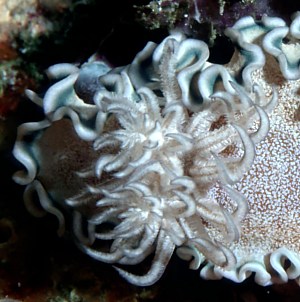
Dear Sarah,
This is Glossodoris hikuerensis, a species found throughout the tropical Indo-West Pacific. In the close-up alongside you can see how the gills form a double spiral in this species, rather than the simple circle found in most dorids. Species which have this double spiral tend to be the larger species, with quite thick body walls. I have hypothesised that the body wall is too thick to allow gas exchange to occur through the skin so the animals have compensated by developing a double spiral of gills which greatly increases the area of tissue engaged in gas exchange.
Best wishes,
Bill Rudman
Glossodoris hikuerensis from Sulawesi
December 20, 2002
From: Mary Jane Adams
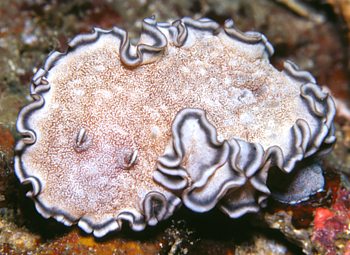
Hi Bill,
When I first saw this Glossodoris hikuerensis in Lembeh Strait, Sulawesi Island, Indonesia, I noticed that the gills were not out. I waited a long time without disturbing it, but they never emerged; not even a tip. I think they were missing. It was about 3cm long.
Depth: about 10 meters
Length: about 3cm
Divesite: Palau Abadi
Date: November 22, 2002.
Best regards,
Mary Jane
divepng@yahoo.com
Adams, MJ., 2002 (Dec 20) Glossodoris hikuerensis from Sulawesi. [Message in] Sea Slug Forum. Australian Museum, Sydney. Available from http://www.seaslugforum.net/find/8651Thanks Mary Jane,
This is an interesting observation. If its gills are absent then it must be getting enough oxygen through its skin to survive
Cheers,
Bill Rudman
Glossodoris hikuerensis from French Polynesia
December 10, 2002
From: Danny Van Belle
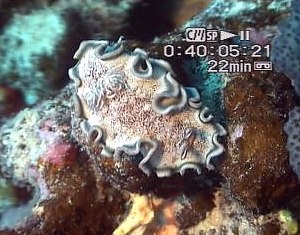
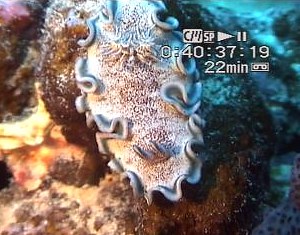
Hi Bill,
I think this is Glossodoris hikuerensis
At 22m depth - Raiatea, French Polynesia
26 June 2000.
Best regards,
Danny Van Belle
dannyvb@hotmail.com
Van Belle, D., 2002 (Dec 10) Glossodoris hikuerensis from French Polynesia. [Message in] Sea Slug Forum. Australian Museum, Sydney. Available from http://www.seaslugforum.net/find/8566Thanks Danny,
Yes this is Glossodoris hikuerensis, which was first found in French Polynesia.
Best wishes,
Bill Rudman
Glossodoris hikuerensis from Reunion
November 19, 2002
From: Marina Poddubetskaia
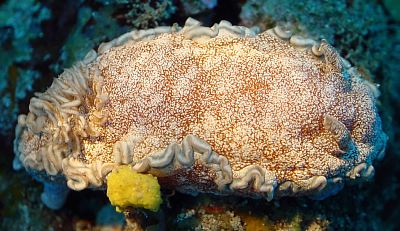
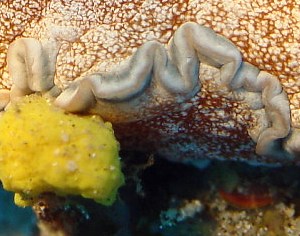
Dear Bill,
Is this Glossodoris hikuerensis from Reunion Island?
St-Leu, Reunion Island, Indian Ocean. Site: Maison Verte. Depth: 14m. Size: about 70mm. October 07, 2002. Photos: Marina Poddubetskaia - Nembro website
Best wishes,
Marina.
nembro@nembro.info
Poddubetskaia, M., 2002 (Nov 19) Glossodoris hikuerensis from Reunion. [Message in] Sea Slug Forum. Australian Museum, Sydney. Available from http://www.seaslugforum.net/find/8370Dear Marina,
Yes this is Glossodoris hikuerensis. We have very few records of this species from the western Indian Ocean so its nice to build up a few more sightings from that region
Best wishes,
Bill Rudman
Glossodoris hikuerensis from nthn Sulawesi
July 6, 2002
From: Helmut Schirmböck
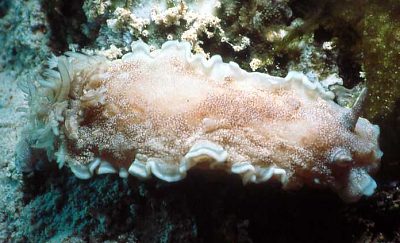
Here is another slug for your site, if you need, from the Bunaken Is - Lembeh Strait region of Nth Sulawesi, Indonesia.
Regards,
Helmut.
schirmis@aon.at
Schirmböck H., 2002 (Jul 6) Glossodoris hikuerensis from nthn Sulawesi. [Message in] Sea Slug Forum. Australian Museum, Sydney. Available from http://www.seaslugforum.net/find/7406Thanks Helmut,
This is Glossodoris hikuerensis.
Best wishes,
Bill Rudman
Glossodoris hikuerensis from Christmas Island
May 14, 2002
From: W.B. Rudman

Here is a record of Glossodoris hikuerensis from John Hicks' Christmas Island, Indian Ocean collections.
This specimen was 75 mm long alive.
PHOTO: AM C126989, 30 November 1980, off Hospital Point, 30 ft, under overhang of coral rock, Christmas Is., Indian Ocean. Photo: John Hicks
Best wishes,
Bill Rudman
Glossodoris hikuerensis from the Solomon Ids
June 25, 2001
From: Bruce Potter
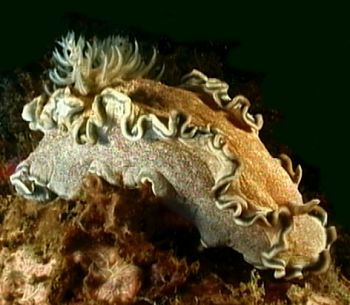
Bill,
I found this Glossodoris hikuerensis last Sunday on the Bonegi 2 shipwreck just outside of Honiara, Solomon Islands. It was at about 6 meters on a piece of dead coral. At over 11 cm, it is one of the largest nudibranchs I have found. The left rhinophore was either damaged, or malformed. The gills were like a small chrismas tree, rising through several layers. At one stage it exuded slime that trailed off in the current like streamers.
Regards
Bruce Potter.
bruce.potter@adventist.org.sb
Potter, B., 2001 (Jun 25) Glossodoris hikuerensis from the Solomon Ids. [Message in] Sea Slug Forum. Australian Museum, Sydney. Available from http://www.seaslugforum.net/find/4640Thanks Bruce,
I certainly knew this as a relatively large species but can't say I have met one 11cm long. The spiralling gills are quite characteristic of this genus and I suspect it is a way of increasing the number of gills as the animals get larger, or their body wall get thicker and so more inefficient as a secondary organ of gas exchange.
Cheers,
Bill Rudman
Tonga Records: Glossodoris hikuerensis
May 29, 2001
From: Don Barclay
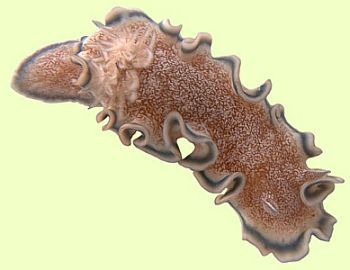
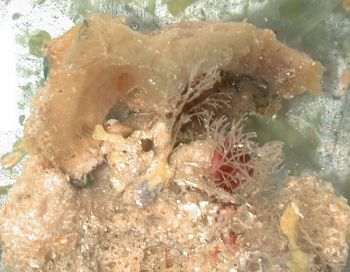
Hi Bill,
Here is Glossodoris hikuerensis. It was found on sponge under a slab in shallow water in front of the Tongan Beach Resort, Utungake Island, Vava'u, Tonga on the afternoon of 15 February 2001. It appeared to be eating the sponge in the attached photo. Size 45mm, depth ~1m.
Cheers,
Don
n5ols@samoatelco.com
Barclay, D., 2001 (May 29) Tonga Records: Glossodoris hikuerensis. [Message in] Sea Slug Forum. Australian Museum, Sydney. Available from http://www.seaslugforum.net/find/4404Thanks Don,
I don't know if I will find a sponge expert fearless enough to identify the sponge from your photo alone, but it might give us a clue, or confirmatory evidence in the future
Best wishes,
Bill Rudman
Glossodoris hikuerensis from Red Sea
February 3, 2001
From: Gordon T. Smith

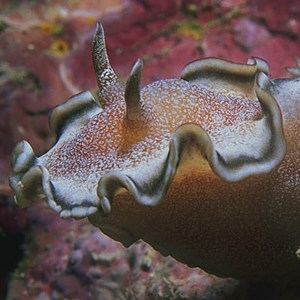
Dear Bill,
Here is an example of Glossodoris hikuerensis from the Red Sea. About 4 cm long at 10 metres
Gordon T. Smith
aquashot@emirates.net.ae
Smith, G.T., 2001 (Feb 3) Glossodoris hikuerensis from Red Sea. [Message in] Sea Slug Forum. Australian Museum, Sydney. Available from http://www.seaslugforum.net/find/3655Thanks Gordon,
Bill Rudman
Glossodoris hikuerensis with extra rhinophore
January 15, 2001
From: Scott Johnson
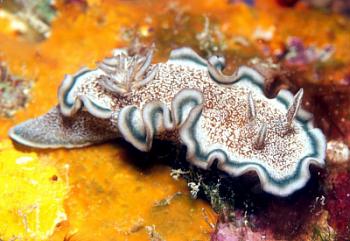
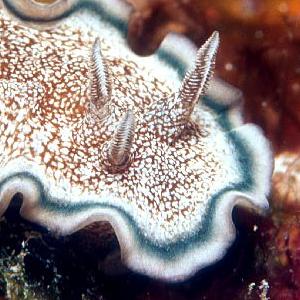
Hi Bill,
If two are good, maybe three are better. We ran across this Glossodoris hikuerensis here at Kwajalein, Marshall Islands, recently. It measured approximately 40mm in length and was unusual in the presence of a third rhinophore along the midline just behind the normal pair. The photo is by Jeanette Johnson.
Scott
johnson@kmr.ll.mit.edu
Johnson, S., 2001 (Jan 15) Glossodoris hikuerensis with extra rhinophore. [Message in] Sea Slug Forum. Australian Museum, Sydney. Available from http://www.seaslugforum.net/find/3512Thanks Scott,
The records list on the Abnormalities Page is certainly growing fast.
Bill Rudman
Glossodoris hikuerensis from French Polynesia
December 20, 2000
From: Daniel L. Geiger
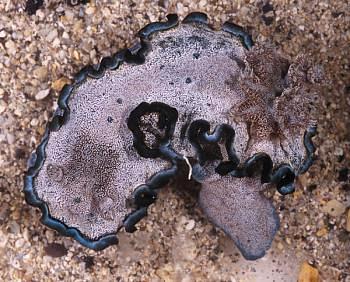
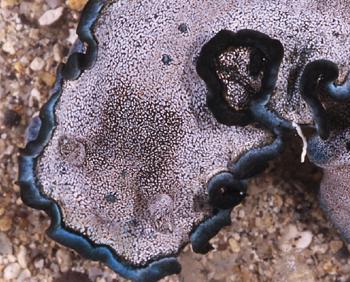
Dear Bill,
I am sending some photos of nudibranchs I collected in French Polynesia in August, 2000. Many have never seen formalin so may be of interest to some people doing molecular phylogenetic work.
The first one is Glossodoris cf. cincta(?) from Moorea.
Best wishes
Daniel
dgeiger@nhm.org
Geiger, D.L., 2000 (Dec 20) Glossodoris hikuerensis from French Polynesia. [Message in] Sea Slug Forum. Australian Museum, Sydney. Available from http://www.seaslugforum.net/find/3305Dear Daniel,
Although this has similarities to Glossodoris cincta, the Pacific colour form has a white border at the edge of the mantle. I think your animal is a dark form of Glossodoris hikuerensis which was described from French Polynesia.
Best wishes,
Bill Rudman.
Large Glossodoris hikuerensis from Enewetak Atoll
May 8, 2000
From: Scott Johnson

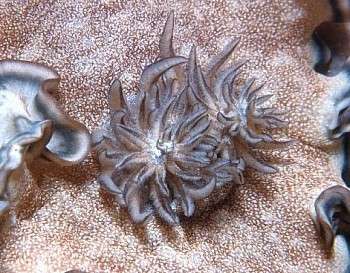
Hi Bill,
Glossodoris hikuerensis grows to a large size indeed. The first individual I found at Enewetak measured 135mm in length (TOP PHOTO) and is still the most massive chromodorid I've ever found. All specimens found since were smaller. I have also included a photo of the spirally branched gills of an 80mm specimen.
Scott Johnson
johnson@kmr.ll.mit.edu
Johnson, S., 2000 (May 8) Large Glossodoris hikuerensis from Enewetak Atoll. [Message in] Sea Slug Forum. Australian Museum, Sydney. Available from http://www.seaslugforum.net/find/2367Dear Scott,
Thanks for the record. I don't think I have one that matches that length. The spiral gills are interesting. They seem to be a feature of chromodorids with a thick skin or a need for extra help in breathing. In some species, only the larger specimens have secondary spirals like this, while in other species with thicker muscular skins secondary gill spirals seem to be normal.
I have a theory that with a thicker skin, gas exchange through the skin would not be very successful, so there is a need to increase the capacity of the gills do do the job. You can either increase the size of the gills or increase the number of gills.
Best wishes.
Bill Rudman.
Glossodoris hikuerensis from South Africa
May 1, 2000
From: Valda Fraser

Dear Bill
I think this is Glossodoris hikuerensis. I hope you have information on its distribution and size. I look forward to hearing from you.
Locality: South coast KwaZulu-Natal, SOUTH AFRICA. Scottburgh - 15m
Date: April 2000
Size: 45mm
Regards
Valda Fraser
iti04937@mweb.co.za
Fraser, V., 2000 (May 1) Glossodoris hikuerensis from South Africa. [Message in] Sea Slug Forum. Australian Museum, Sydney. Available from http://www.seaslugforum.net/find/2325Dear Valda,
Yes your photo is of G. hikuerensis. It has a wide distribution across the Indo-West Pacific. Most records are from the Pacific, but I reported an animal from Kenya (Rudman, 1986), and you have it now from South Africa. The western Indian Ocean animals seem to have a slight colour difference with the bluish band around the margin being clealry separated from the brown reticulate pattern, while in the Pacific the band seems to merge with the reticulate pattern.
hard to give a good idea of how large it grows because we have so few records. However the photograph above is of an 80mm long animal, so they grow to quite a large size.
Best wishes,
Bill Rudman.
